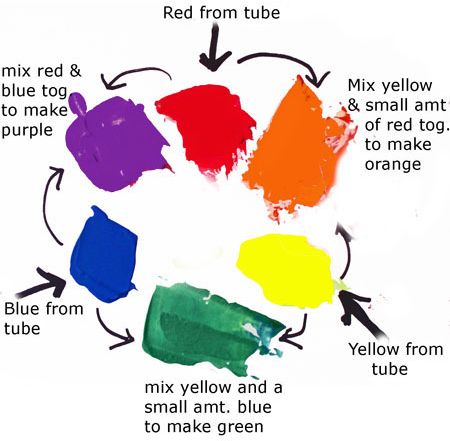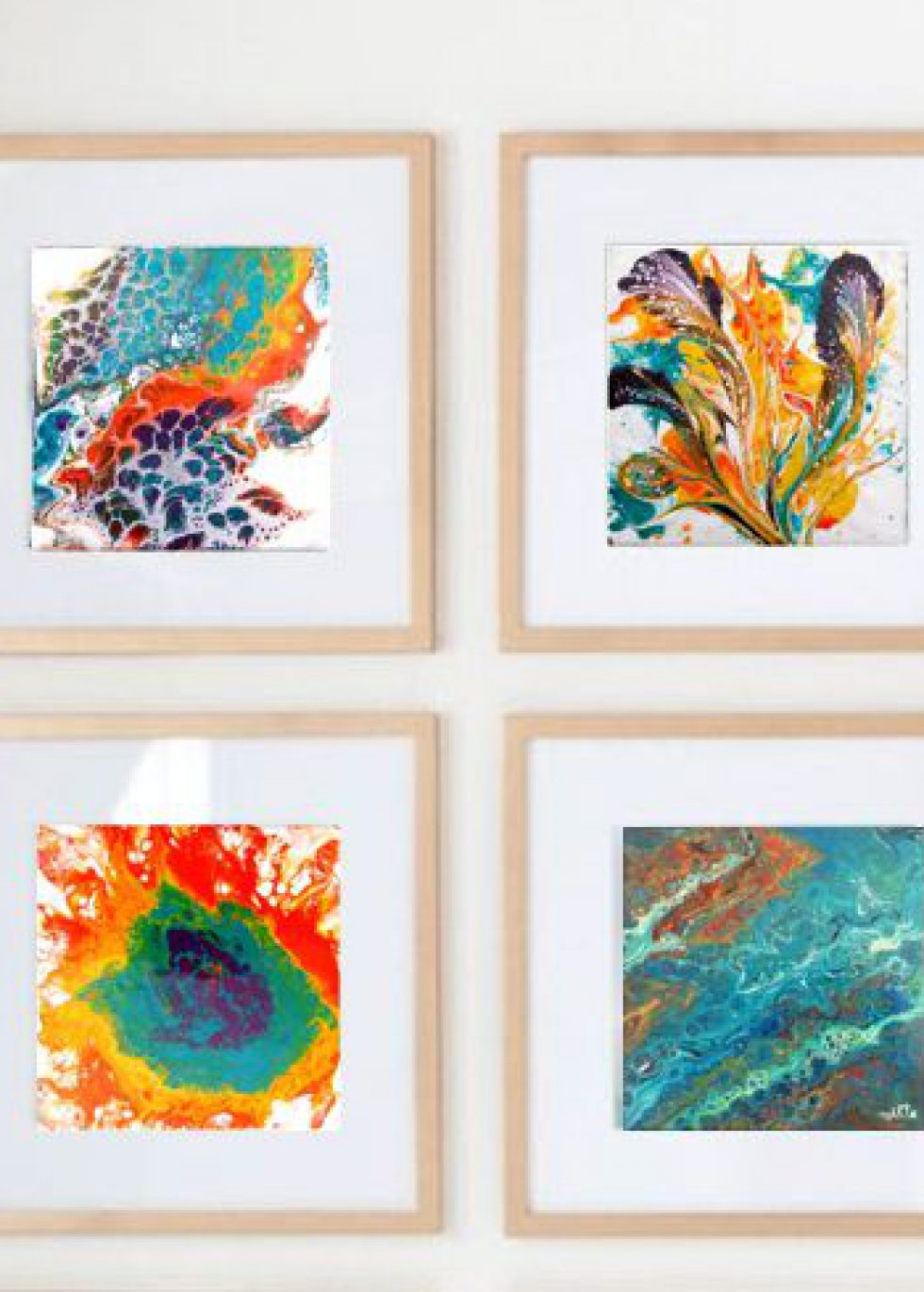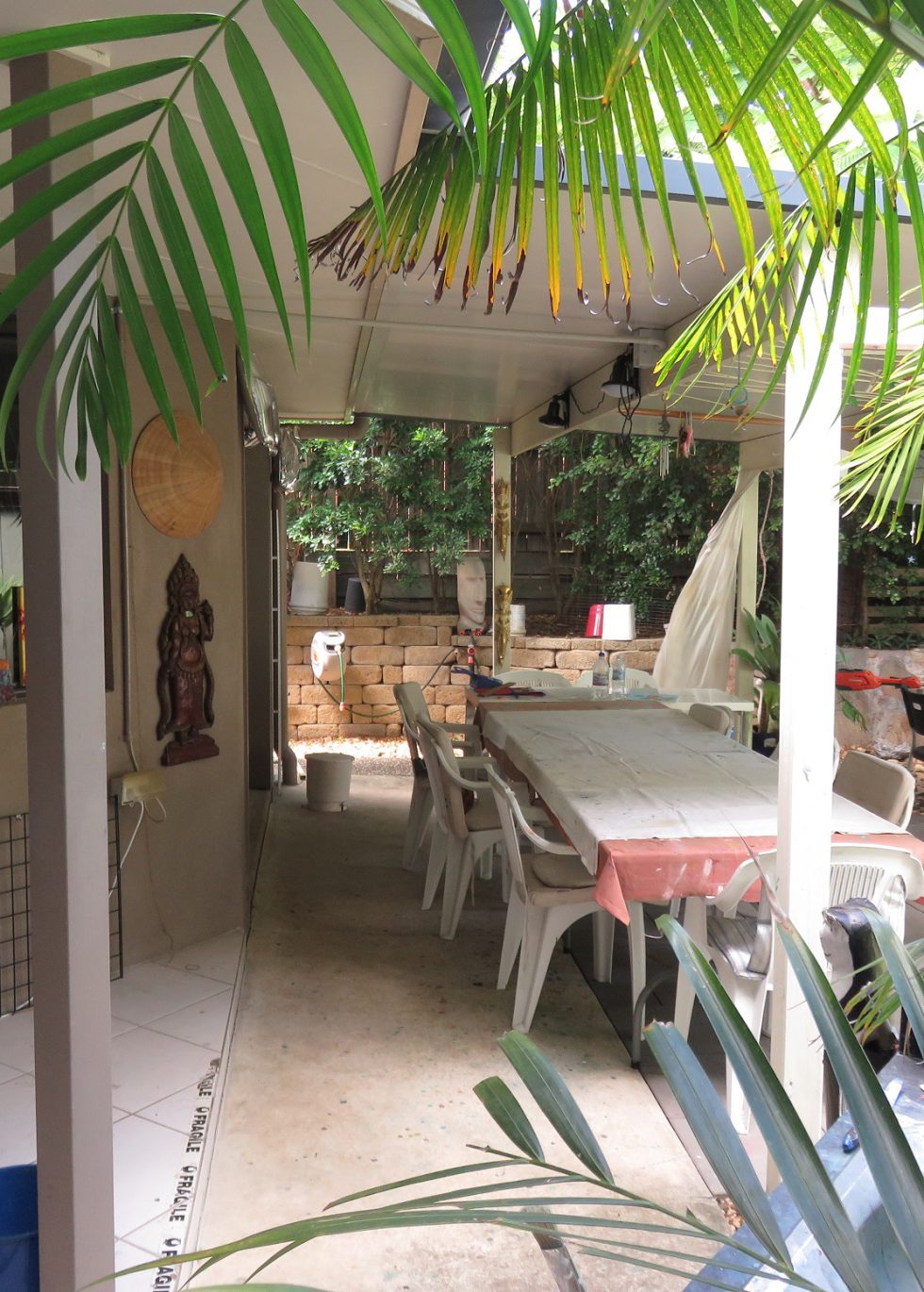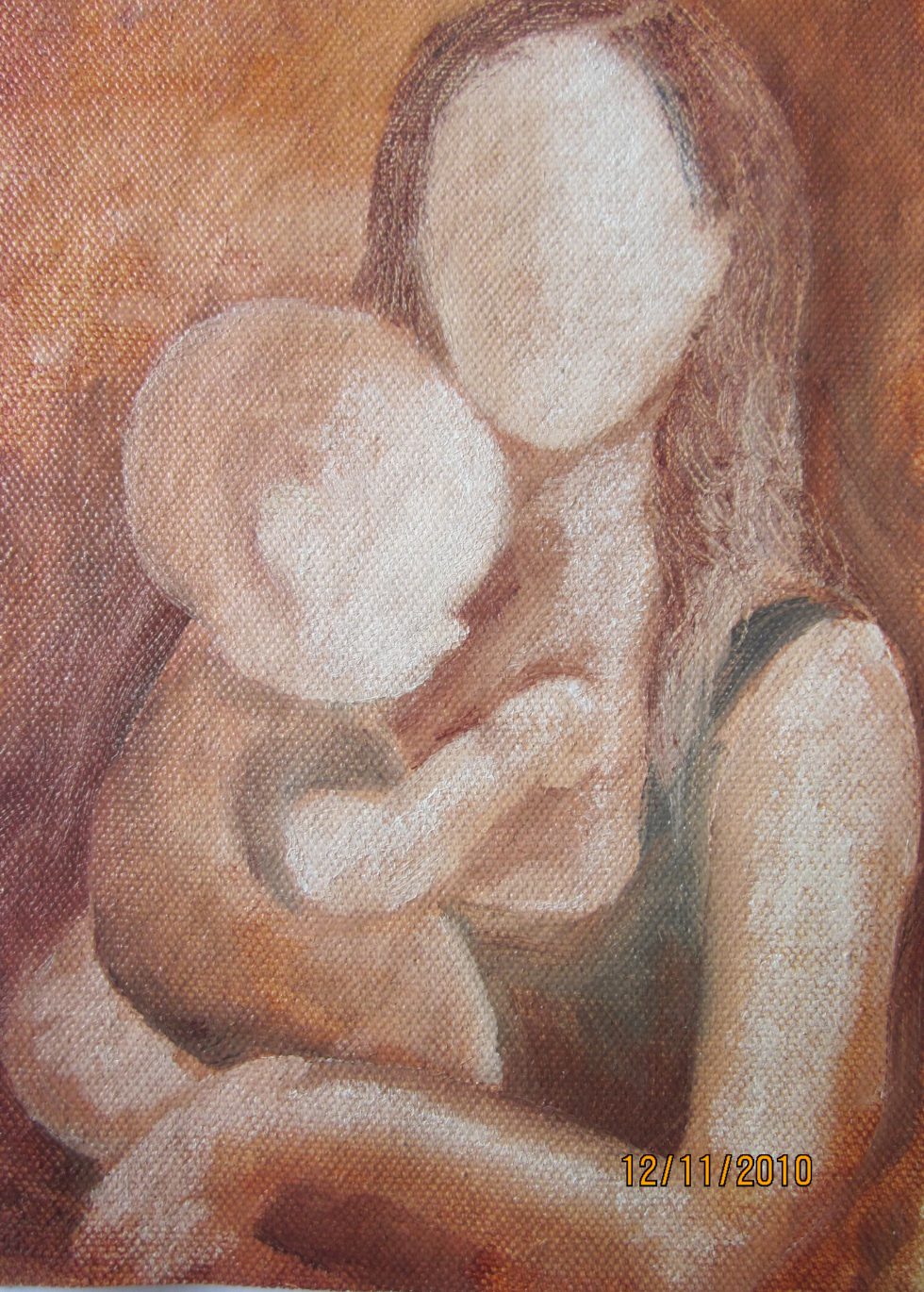Refresher in Colour Mixing
13 January 2014 / Workshops
Secondary colours orange, purple and green are mixed from primary colours, red, yellow and blue. The intensity of the secondary colours, depends on the red, yellow and blue you use to mix.
http://artintegrity.files.wordpress.com/2008/08/julias-colour-wheel.jpg
1. A COOL red has no yellow in it to start with – e.g. Rose madder, Magenta, Crimson.
2. A WARM red has some yellow in it – e.g. Cadmium Red, Vermillion.
3. A COOL blue is without any red or yellow in it (Phthalo Blue, Cyan Blue).
4. A WARM blue that has some red in it is Ultramarine Blue.
5. A COOL yellow like Lemon yellow has no red in it.
6. A WARM yellow, like Yellow Deep, has some red in it.
If you are not using black and want to mix dark colours from your primaries, you will need a darker red crimson and a darker blue like Ultramarine.
Your purest greens will come from a Lemon Yellow mixed with Cyan Blue or Cerulean Blue.
If you lighten the paint with white, then it’s called a tint of a colour.
If you darken paint with black paint it is call a shade of a colour.
If you want the green to be more like an olive green, as in Australian gum trees for example, you add varying SMALL amounts of red to the yellow/blue mix until you get the colour you want.
Using a darker blue results in a darker green.
Always add only a very small amounts of a darker colour to the lighter colour, so you would add the small amount of blue to the yellow GRADUALLY. Add more colour a bit at a time until you are happy with the results.










Leave a comment
Your email address will not be published. Required fields are marked*